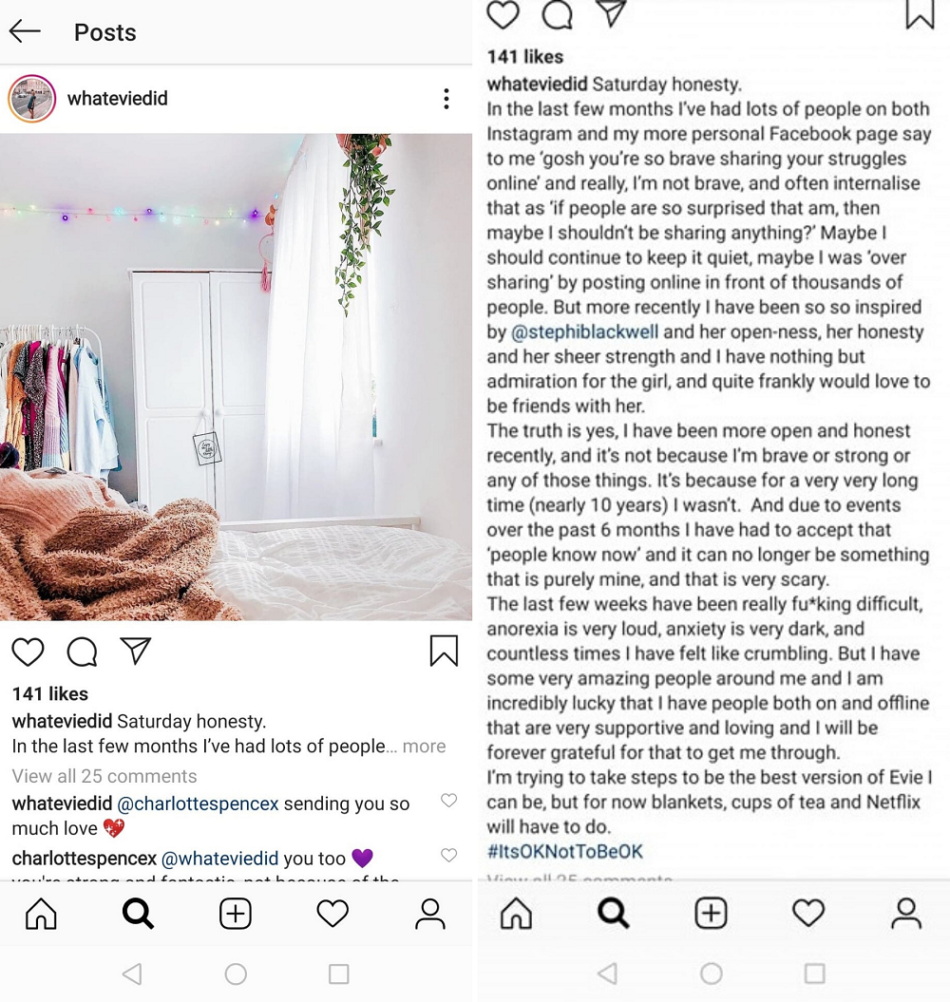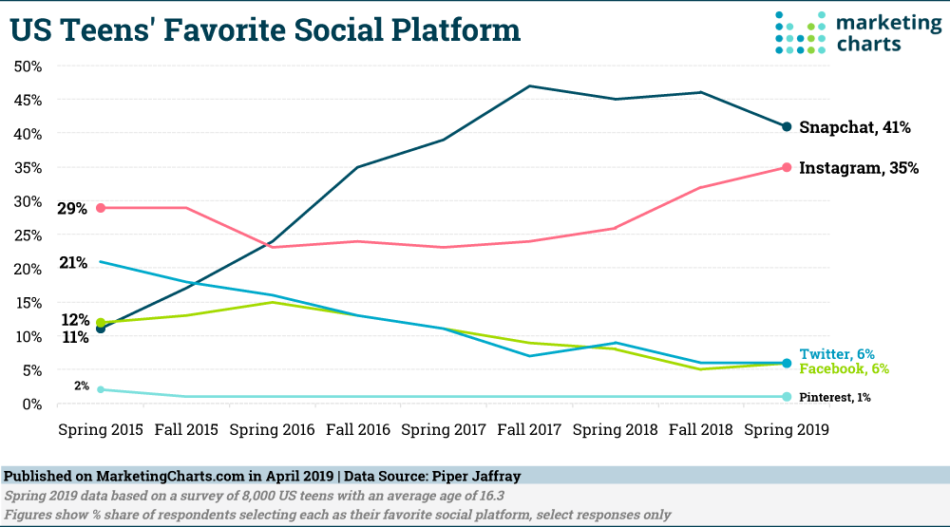Life is a cycle with its ups and downs. Everything has to adhere to this invariable rule. So nothing is forever, not even Facebook. Especially in business, it’s wise to think for the future and build long-term marketing strategies for Gen Z.
By starting now, today’s youth will grow familiar with your brand. When it’s their turn to take the helm of the largest shopping group, your products will be their first shopping choices.
What Is Generation Z Like?
Zoomers are 18-24-year-old students with big dreams and plans for the future. This generation is just starting to shape a personality. But they haven’t even earned a name of their own yet.
What’s certain is that they were born with their hands already typing on smartphones. Born after 1997, technology has been part of their everyday life since day one. There’s no wonder that their key traits point to a promising collective:
- Technology-savvy;
- Dream job: business CEOs driven by social and global missions;
- Global citizens;
- Humanitarians;
- Active members of a diverse and inclusive culture;
- Ambitious.
What Does Generation Z Want?
It’s difficult to decide on one Gen Z profile. While studies show that they respond to emotional ads, it is their adolescent stage that frames them into a sensible group.
For the moment, our young generation watches out for:
- Out-of-the-box brands – The adolescent side of Generation Z wants to see nothing boring in their menus. Coca-Cola, for instance, is keeping its crown as an innovative brand by populating the Instagram account with vibrant illustrations and collages with a frisky twist;
- Nostalgic vibes – Bringing back the past is their way of rebelling against current trends. In other words, take your vintage story and make headlines with it;
- Listen to micro-influencers – They love when similar people with many social followers on social talk about new products. But they don’t trust celebrities and their recommendations that much;
- Lifestyle diversity – Any sign of stereotypes is off-putting to them. Modern society offers them so many choices, that there’s not clear how Generation Z is going to turn up. A simple way to stay away from conformities in your marketing to Gen Z is to take out gender markers.
- Brands deep in social activism – Facebook found out that 68% of Generation Z expect brands to pay it forward.
- Values First – Unlike Millennials, Zoomers have little interest in product experiences. Instead, they are after products that fit in a society that cares most about the environment.
- Visuals that cheer the unusual – In a generation that loves individuality yet cares for diversity, people are eccentric. Use images and words that celebrate differences and unity to draw their attention. The Body Shop is a skincare company that promotes its sustainable cosmetics through unusual beauty types. Their Instagram profile is definitely a stereotype-free space where everyone is welcome to feel good in their skin;
- Original campaign ideas – Ads have always mirrored the society as it is. But they are also bringing up aspirations. Thus, Zoomers’ desire to improve the system should appear in the media.
We’re done cracking down on what they want. Let’s see how these generational traits are going to change marketing strategies for Gen Z.
In the current setting, Instagram is an infinite mall of dreamy visuals. Users get lost in Stories, in their feed or on Explore Page, admiring glamorous lifestyles. They come in here to unwind and find inspiration.
Meanwhile, Instagram has organically gone through some changes this year. Its users increased their interest in storytelling, goofy posts, and confidentiality.
These changes have taken the shape of long-form captions. Users don’t feel like their photos are enough anymore. Instead, they turn to lengthy texts to supplement the visual experience with storytelling.
At the same time, teenagers have jump-started a phenomenon dubbed as Finstas. This is short for Fake Instagram. Their main profiles are full of filtered posts that plenty of people have access to. Finstas have a different purpose.
These account owners post casual photos that they want to share with a handful of friends. Finstas might be a clue to what’s to come: Instagram content relatable to real everyday life. Instagram users will want to see the bad, not only the good.
In short, social media strategies for Gen Z that work for Instagram Business profiles answer to a need for deeper connections.
Current Formula
- Short captions;
- Instagramable content;
- Message focused on the ideal lifestyle;
- Regrams;
- Large audiences.
The Z Formula
- Long captions about life-changing events, behind the scenes, product launches, etc.;
- Content that adds value;
- Building authentic connections;
- Original content;
- Small yet engaged audiences;
- Finstas.
YouTube
YouTube managed to keep its control over the video-sharing industry. You don’t need an app or any credentials to enjoy funny clips, music videos or vlogs with your friends.
Video content is easily accessible and entertaining thanks to YouTube. Plus it’s the first platform creators upload their content on.
Brands use YouTube to showcase all their video content at regular intervals paying attention to key YouTube metrics. The ideal YouTube format is clean. But this doesn’t necessarily involve professional equipment. This way anybody can start filming for YouTube audiences.
But Generation Z would rather commit to continuity. They want to follow a storyline that keeps adding new chapters periodically just as series do in TV shows.
Instead of playing a minor role, YouTube will take on more responsibility for brands. Companies are going to use this channel to teach about their products. This way, their core values are showing up right in front of Zoomers.
And who is going to present brands from a cultural angle? Usually, companies choose employees and YouTube influencers to be the voice of their brand.
Let’s take beauty influencers Jeffree Star and Shane Dawson. Both of them once again proved they’re ahead of their time when they filmed The Secret World of Jeffree Star. Dressed as a documentary on Jeffrey’s lifestyle as a beauty influencer, the 12-part series closely follows the events that led to the launch of a new makeup line. Packed with information about the beauty industry, Star’s videos are also keeping viewers on the edge by exposing his private life.
Current Formula
- Consistency to stick to a schedule;
- Used for a supportive role whose only goal is to beat the drum for websites;
- Heavy on CTAs;
- Branding first.
The Z Formula
- Standalone video series;
- Employees as product ambassadors;
- Authenticity (Manifested through influencer partnerships or brand ambassadors). Just like the DaveHax YouTube channel did for the mouldable glue Sugru. Not only is the influencer recommending a new product, but he’s also showing how easy it is to use the glue in a special Christmas DIY project.
The number one messaging app, WhatsApp has set the scene for the era of “dark social.” This refers to the sum of traffic sources where marketers can’t see what’s happening.
Through WhatsApp, users are accessing landing pages without leaving any footprint behind. These actions take place behind closed doors like Instagram’s “Close Friends” feature. Or they might be messaging apps.
For the moment, companies don’t consider WhatsApp a priority. Part of the reason is that it’s hard to track the activity here.
The Telegraph is among the few companies that gave this messaging app a shot. It turned out for the better. The British newspaper is sending twice a weekday a 2-minute audio bulletin. Subscribers are definitely loving it and the newspaper won a loyal base of readers.
Zoomers’ appetite for natural connections will continue to grow. In response, WhatsApp will eventually become a shiny social platform.
Current Formula
- Build a contact database;
- Share promotional codes;
- Organize exclusive sales or giveaways;
- Support line.
The Z Formula
- Personalized connections;
- Spark conversations on worldwide matters;
- AMA sessions (“Ask Me Anything” concept);
- Product release questions;
- Chatbots for faster global expansion;
- Manage conversations instead of giving lectures;
- No sales talk.
TikTok
TikTok was created from the beginning for youngsters. All social media strategies that are at play here are already built for Gen Z.
But few are willing to start their adventure in the land of goofy content. The Washington Post was the first to bust a stereotype. Newspapers are too formal to connect with young generations they say.
The Washington Post TikTok profile shows the contrary. Each of their videos mixes together funny and smart elements. This proves that TikTok is a judgment-free zone.
But TikTok won’t remain young at heart forever. It is bound to grow up along with its target public, Gen Z. In time, TikTok will grow into a strong social platform with a clear goal. It will better connections with brands and decide on a shortlist of key features.
Current Formula
- So far, only global brands have dared to step into the creative world of TikTok;
- Ads with links to landing pages and shopping buttons;
- Hashtag Challenge Plus;
- Remains a fertile soil (low activity can still generate followers in the thousands).
The Z Formula
- Brands can stop taking themselves seriously;
- Create videos that entertain.
Snapchat
A native mobile app that speaks to people of 24, the content on Snapchat is always fresh. Speaking of that, Snapchat succeeded where others failed.
The app isolated a key element of face-to-face conversations only to upload it on digital: transient memories.
Its founders figured out that it’s the short-lived nature that makes conversations memorable. This trait makes human bonding all the more precious. As a result, any piece of content on Snapchat disappears after some time.
Currently, brands are focusing on sales whenever they step onto this platform. Snapchat ads, giveaways, branded filters, you name it.
But companies are losing sight of the reason why Gen Z loves Snapchat: personal connection. Snapchat is the only one among the Ivy League of social platforms that encourages real-life conversations.
According to the below infographic brought by Marketing Charts, Snapchat is the number one favorite social channel among US teens.
Thus marketing to Gen Z on Snapchat can be summed up to conversational posts. Whether live videos or sneak peeks, Snapchat users love raw experiences without filters.
Although… Speaking of filters, there is a feature called Snappable that users are crazy about. Introduced as a filter, yet this version doesn’t beautify reality.
Instead, Snappables are adding games and funny moments into our daily monotony. Companies can join the Snapchat conversation by releasing their own Snappables.
Brands can also create Snapchat landing pages for hashtags with shoppable tabs. Called Hashtag Challenge Plus, these hashtags gather posts created by users (also known as user-generated content) under one common keyword. If they see a product they like among these posts, users have the chance to buy it online.
Current Formula
- Snapchat ads;
- Influencer account takeover;
- Branded Snapchat filters;
- Exclusive contests.
The Z Formula
- Generate mobile-first experiences;
- Daily or weekly bite-sized content;
- Branded Snappables;
- Geofilters;
- Live Stories.
Conclusion
It is time for brands to focus on young generations too. It won’t be long before their purchasing power gets overwhelming.
For now, it’s safe to experiment with social platforms where Gen Z are most active. Instagram, YouTube, Whatsapp, TikTok, Snapchat – each has its own way of getting reactions.
Companies have to learn which buttons to push first. By starting early, Zoomers will grow into young adults with your brand in mind.
All in all, marketing to Gen Z should consist of technology, real connections, and live content. Take a step outside your comfort zone.
Step away from those repetitive plans that work on Facebook and Instagram (for the time being). Instead, come up with extraordinary strategies with no safety belt on. Now is the time to be creative. Jump into conversations with teenagers, students or young entrepreneurs to better understand them.









